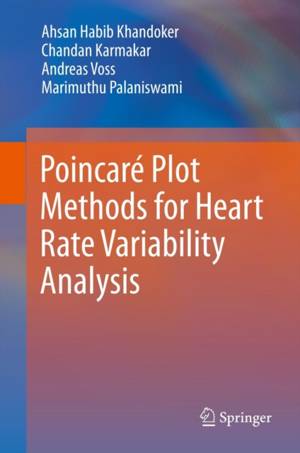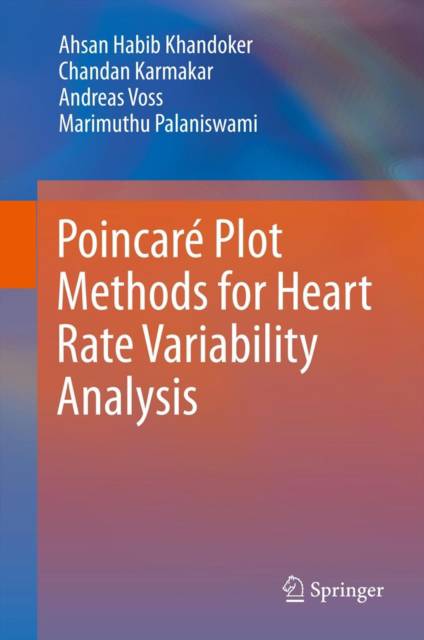
- Afhalen na 1 uur in een winkel met voorraad
- Gratis thuislevering in België vanaf € 30
- Ruim aanbod met 7 miljoen producten
- Afhalen na 1 uur in een winkel met voorraad
- Gratis thuislevering in België vanaf € 30
- Ruim aanbod met 7 miljoen producten
Zoeken
Poincaré Plot Methods for Heart Rate Variability Analysis
Ahsan Habib Khandoker, Chandan Karmakar, Michael Brennan, Marimuthu Palaniswami, Andreas Voss
Hardcover | Engels
€ 167,95
+ 335 punten
Uitvoering
Omschrijving
The Poincaré plot (named after Henri Poincaré) is a popular two-dimensional visualization tool for dynamic systems due to its intuitive display of the dynamic properties of a system from a time series. This book presents the basis of Poincaré plot and focus especially on traditional and new methods for analysing the geometry, temporal and spatial dynamics disclosed by the Poincaré plot to evaluate heart rate variability (HRV). Mathematical descriptors of Poincaré plot have been developed to quantify the autonomic nervous system activity (sympathetic and parasympathetic modulation of heart rate). Poincaré plot analysis has also been used in various clinical diagnostic settings like diabetes, chronic heart failure, chronic renal failure and sleep apnea syndrome. The primary aims of quantification of the Poincaré plots are to discriminate healthy physiological systems from pathological conditions and to classify the stage of a disease. The HRV analysis by Poincaré plot has opened up ample opportunities for important clinical and research applications. Therefore, the present book can be used either for self-study, as a supplement to courses in linear and nonlinear systems, or as a modern monograph by researchers in this field of HRV analysis.
Specificaties
Betrokkenen
- Auteur(s):
- Uitgeverij:
Inhoud
- Aantal bladzijden:
- 146
- Taal:
- Engels
Eigenschappen
- Productcode (EAN):
- 9781461473749
- Verschijningsdatum:
- 13/08/2013
- Uitvoering:
- Hardcover
- Formaat:
- Genaaid
- Afmetingen:
- 160 mm x 234 mm
- Gewicht:
- 385 g

Alleen bij Standaard Boekhandel
+ 335 punten op je klantenkaart van Standaard Boekhandel
Beoordelingen
We publiceren alleen reviews die voldoen aan de voorwaarden voor reviews. Bekijk onze voorwaarden voor reviews.











